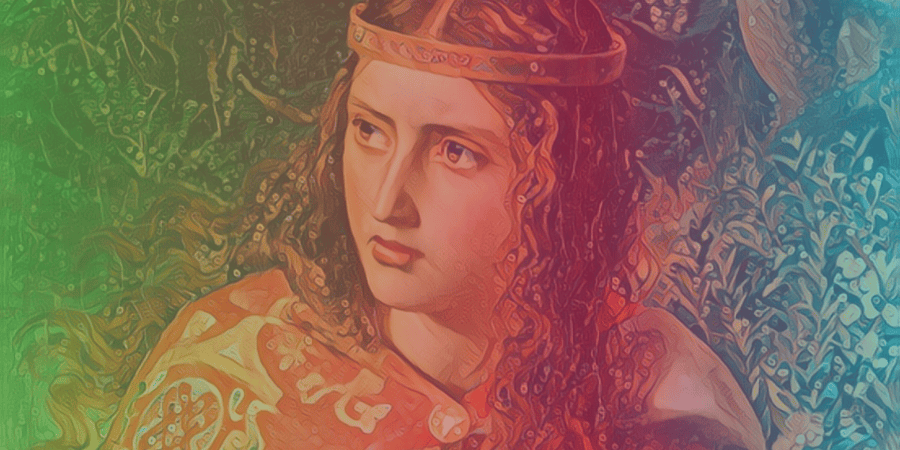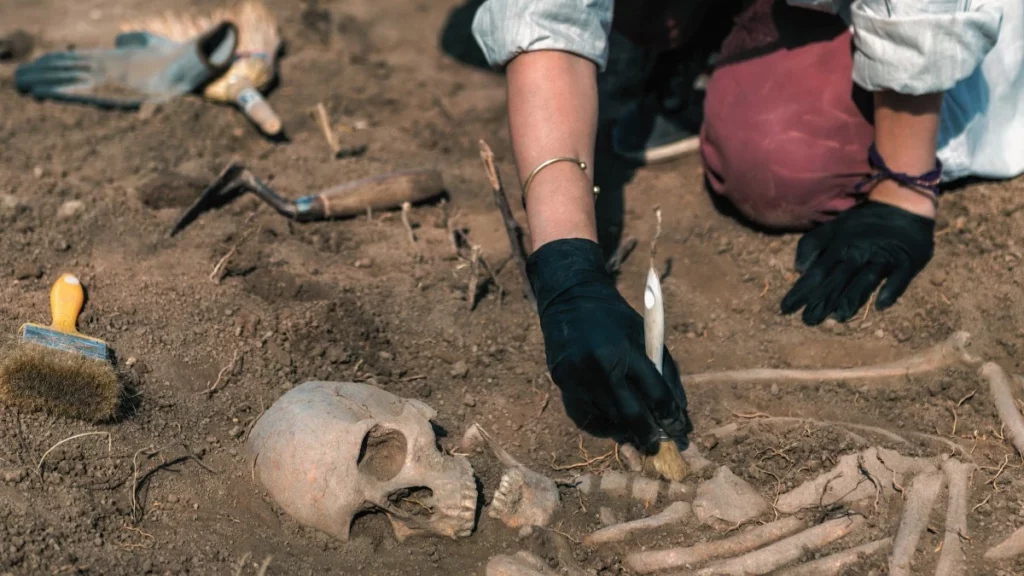Key Takeaways
- Eleanor of Aquitaine's daughters and daughters-in-law played crucial political roles in Western Europe during the late 12th and early 13th centuries.
- Eleanor's daughters-in-law have been overlooked despite their key roles in the family's political network.
- Female kinship networks in medieval times were essential in bridging the gap between birth and marital families and played vital roles in political and diplomatic situations.
- Berengaria of Navarre and Matilda, Richard's full sister, were part of strategic matrimonial alliances that helped secure alliances and hostages for the family in times of need.
- When we consider medieval kinship networks, we should remember those who married into a family, as well as those born into it.
Eleanor of Aquitaine was the mother of ten children, five of whom were kings or queens.
While her sons often take center stage, her five daughters—Marie and Alix from her marriage to Louis VII of France, and Matilda, Leonor, and Joanna from her marriage to Henry II of England—played crucial political roles in Western Europe during the late 12th and early 13th centuries.
Additionally, Eleanor’s daughters-in-law—Margaret of France, Berengaria of Navarre, Constance of Brittany, Isabelle of Gloucester, and Isabella of Angoulême—have been greatly overlooked despite their key roles in the family’s political network.
These women had diverse relationships with one another, but their lives intersected and they played pivotal roles in some of the most famous episodes in Angevin royal history, such as Richard the Lionheart’s capture, imprisonment, and ransom between 1192 and 1194.
His mother’s efforts to secure his release are well known, but his wife’s family, two of his sisters, and one of his sisters-in-law were also intimately involved in the proceedings.
Marie of France: A Delicate Political Balancing Act
Marie of France, the eldest of Eleanor of Aquitaine’s children, ruled Champagne for extended periods.
She played a critical role in maintaining a delicate political balance between her half-brother, King Richard of England, and her brother, King Philip Augustus of France.
Marie’s family connections enabled her to walk a tightrope with great skill, ensuring the safety of her family members during turbulent times.
Berengaria of Navarre: A Strategic Matrimonial Alliance
Richard the Lionheart’s wife, Berengaria of Navarre, was part of a strategic matrimonial alliance with her father, Sancho VI.
Although the nature of Richard and Berengaria’s marital relationship has been the subject of much speculation, it is important to note that Richard was connecting himself with a powerful family, not just a wife.
Berengaria’s family played a role in securing Richard’s release, as her younger brother Ferdinand was one of the hostages sent to Germany as a pledge of good faith.
Matilda: Building Relationships and Securing Allies
Matilda, Richard’s eldest full sister, married Henry the Lion, Duke of Saxony and Bavaria.
Despite the challenges of her marriage, Matilda built a strong relationship with her husband and had a daughter and four sons.
Matilda’s relationships with her sons and other international figures were crucial in securing alliances and hostages for her family in times of need.
Eleanor of Aquitaine was an influential figure in her own right, controlling a large portion of France and eventually becoming Queen of England after her annulment from Louis VII of France.

Constance of Brittany: An Unwilling Member of the Family Network
Constance of Brittany, the wife of Richard’s late brother Geoffrey, resented her upbringing and position within the Angevin family network.
Despite her reluctance, Constance played a role in events that unfolded throughout her life, including the ransom of Richard the Lionheart and the custody disputes involving her children.
The Power of Female Kinship Networks in Medieval Times
Female kinship networks in medieval times were essential in bridging the gap between birth and marital families.
These women played vital roles in political and diplomatic situations, often requiring considerable skill.
Eleanor of Aquitaine’s daughters and daughters-in-law are prime examples of the significant influence women could wield during this period.
Eleanor of Aquitaine’s Legacy
Eleanor of Aquitaine was an influential figure in her own right, controlling a large portion of France and eventually becoming Queen of England after her annulment from Louis VII of France.
Her daughters and daughters-in-law also played important political roles in the 12th and 13th centuries, as they were instrumental in maintaining diplomatic relationships between their birth families and their husbands’ families.
Eleanor’s daughters Marie, Alix, Matilda, Leonor, and Joanna were all important figures in their own right, but her daughters-in-law have been largely overlooked.
Richard the Lionheart’s Capture and Ransom
Margaret of France, Berengaria of Navarre, Constance of Brittany, Isabelle of Gloucester, and Isabella of Angoulême were all part of an international female network that intersected with Eleanor’s family and played pivotal roles in some of the most famous episodes in Angevin royal history.
One such episode was the capture, imprisonment, and ransom of Richard the Lionheart in 1192-94.
While Richard’s mother, Eleanor, worked to secure his release, his wife’s family, two of his sisters, and one of his sisters-in-law were also intimately involved in the proceedings.
Marie of France was in a delicate political position in the 1190s, being the half-sister of the king of England and of the king of France.
It was due to her family connections that her husband, Henry II of Champagne, was seen as an appropriate compromise candidate for the throne of Jerusalem.
He was crowned in 1192 in an effort to stop the English and French contingents from fighting amongst themselves.
Richard wrote to Marie while he was in captivity.
He addressed her as “Countess, sister” and asked her to tell his nobles that “they are not men to rely on” if they do not help him in his hour of need.
Berengaria of Navarre, Richard’s wife, did not play a prominent role in the ransom negotiations, but her family connections were important.
In making a strategic matrimonial alliance with Berengaria’s father, Sancho VI, Richard was connecting himself with a family, not just a wife.
Matilda, Richard’s full sister, had a son named Otto who was sent as a hostage to Germany as a pledge of good faith upon Richard’s release.
Matilda had introduced her sons to their royal grandparents and uncles when she took shelter at Henry II’s court with her husband, Henry the Lion, Duke of Saxony and Bavaria.
Constance of Brittany, the daughter of Richard’s late brother Geoffrey and his wife, was closely involved in the ransom situation as well.
Although Constance was a very unwilling member of Eleanor of Aquitaine’s family, much more so than any of the other daughters-in-law, she was still a member of the Angevin network she despised.
Eleanor’s Imprisonment and Later Years
When we consider medieval kinship networks, we should remember those who married into a family, as well as those born into it.
These women played vital roles as bridges between their birth family and the one they had married into, a task that required a considerable amount of political and diplomatic skill.
Eleanor of Aquitaine’s annulment from Louis VII of France marked one of the most expensive divorces in history.
Despite her individual power and wealth, the laws of the day said no woman could inherit the throne of France, and the couple’s failure to produce a son led to the annulment.
Louis lost a great deal of land, wealth, and power by ending the marriage.
Eleanor went on to marry Henry Plantagenet, the grandson of Henry I of England, and became Queen of England.
She gave birth to three daughters and five sons, three of whom became kings.
Her son Henry organized a revolt against his father in 1173, which failed, and Eleanor was punished by being kept under house arrest for 16 years.
She was released when Henry II died, and their son Richard I ascended to the throne.








